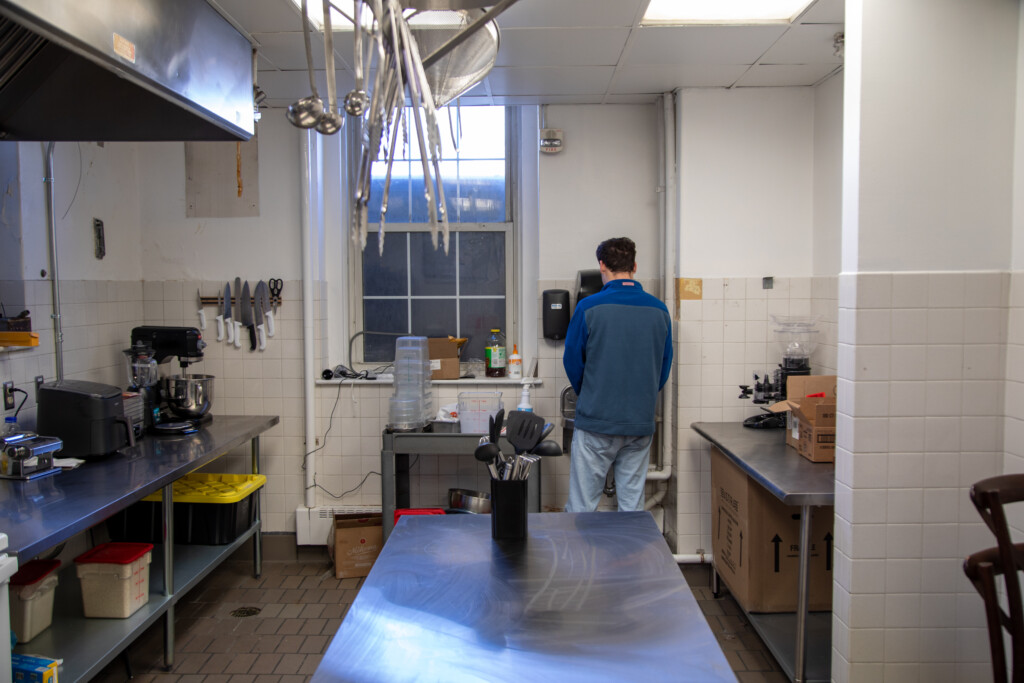When browsing the library shelves or the Amazon bookstore, there comes a point when you give up on that old maxim “Don’t judge a book by its cover.” We often conceive of books as precious objects filled with the knowledge and stories of humanity—and maybe they once were—but nowadays they are really just another mass-produced commodity of the modern age. This reality is at the heart of “PULP,” the latest show at Hartnett Gallery which features work by Roger Boulay.
Boulay is a native of Massachusetts and received a B.A. in Fine Arts and French at Amherst College in 2003. Shortly thereafter he received an M.A. in Art History from the Universiteit van Amsterdam and returned to the Boston area to teach. He left Boston for the University of New Mexico in 2008, received an M.F.A. in Photography in 2011 and now lives in Minnesota, where he teaches at Winona State University.
Boulay’s work is keenly in touch with the consumption of popular culture. Strategically installed in the acute corner of Hartnett Gallery is “Guide to the Galaxy” (2015), like the two covers of a book. To make them, he used the actual covers of cheap paperbacks purchased for a few cents at community library sales. Parts of the covers are colored silver with paint pens, erasing much of the relevant information while leaving those images that grab our attention on the shelves. Knives, aircraft, metallic ties and more are all that remain to remind us of what these books are about, though Boulay finds them reminiscent of meme pictures.
There is also “Morning, Noon and Night” (2013), where Boulay has used a variety of techniques to damage and erase the physical covers, then has digitally blown them up to be larger. All of a sudden these hand-sized paperback covers are larger than your face, yet their details effaced and hazy, like a memory.
Around the room are various photographs of “planets.” For these, Boulay has created transparent prints of vinyl records and then used that print as a negative for the photo. There is something of an aesthetic disconnect between these pieces and the book covers, but just like the book covers, their content has been obliterated. More interestingly, perhaps, they speak to further areas that Boulay could explore, in terms of popular electronic media.
The pieces in “PULP” force us to acknowledge the consumerist habits we have become accustomed to. Roger Boulay calls attention to how we remember the products made in this never-ending economic cycle: as fragments and symbols without any meaningful content. When it comes down to it, are our memories that much different from the pageless book covers that Boulay uses? How do we value these items that are produced for our consumption but that we will never be able to wholly remember? Boulay has at least one answer for that: cover it in metallic paint and call it art. “PULP” is on display at Hartnett Gallery until Dec. 6.

